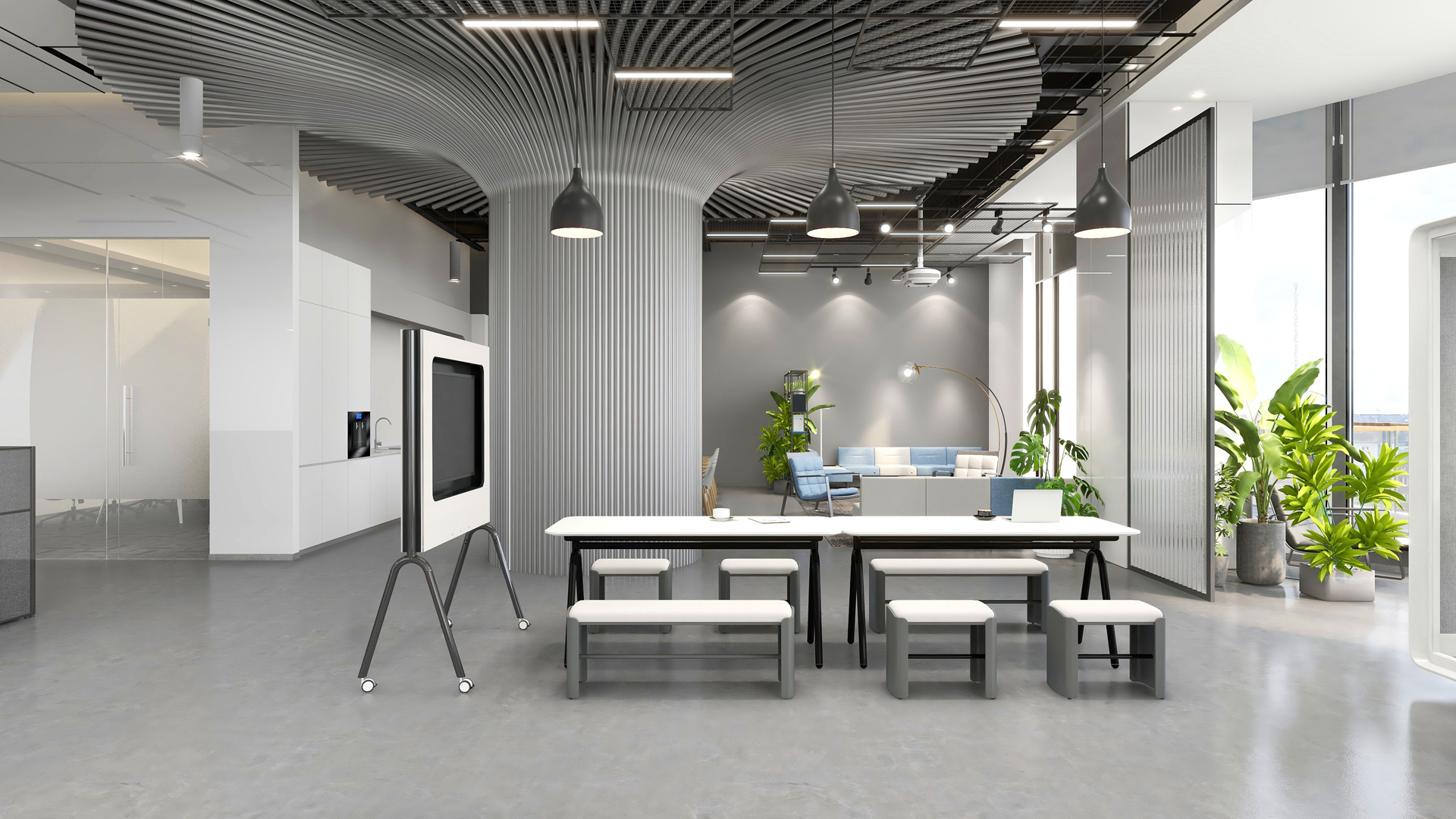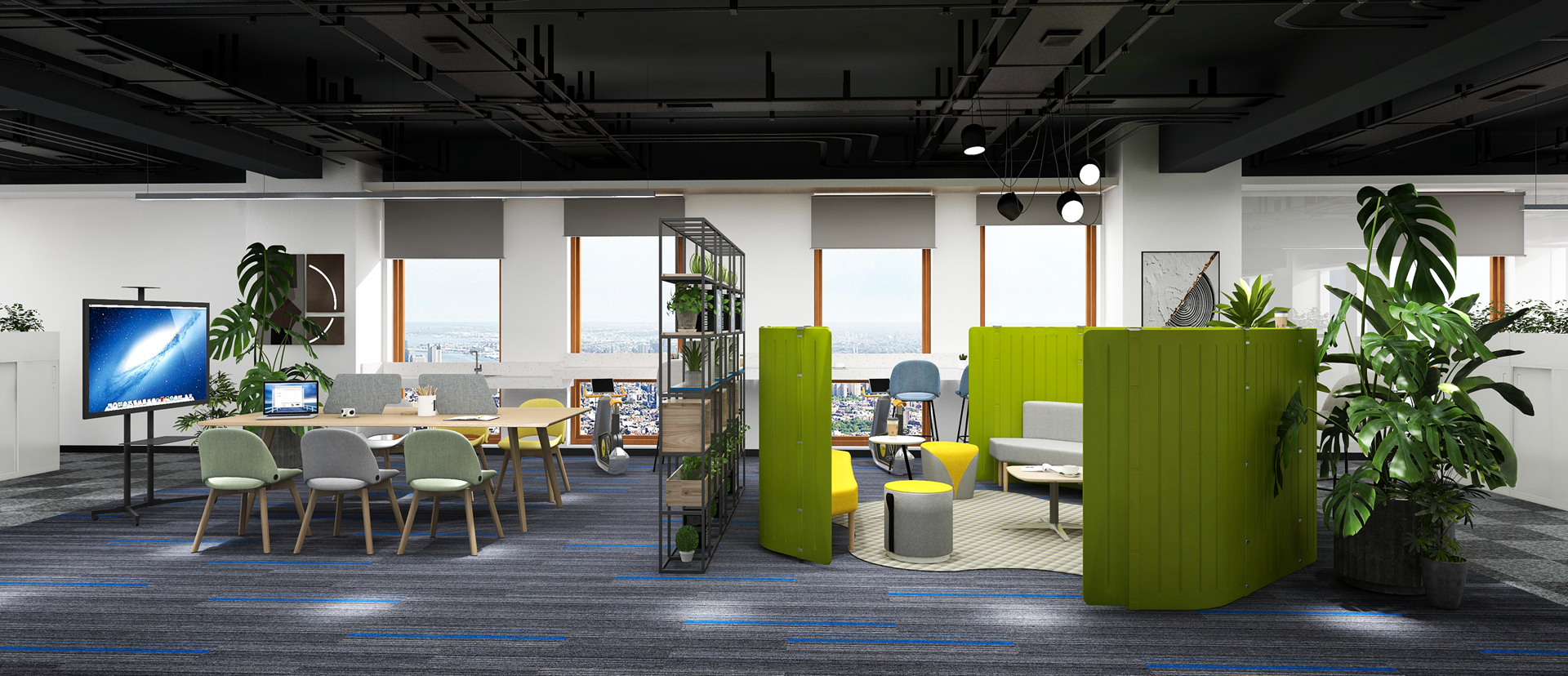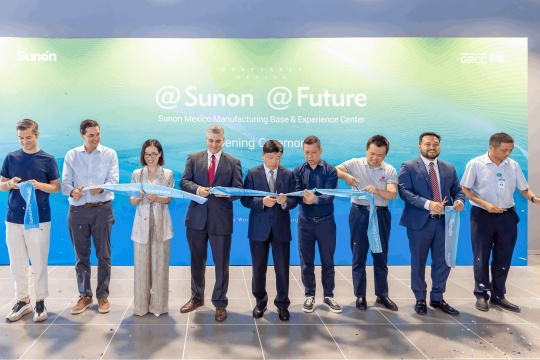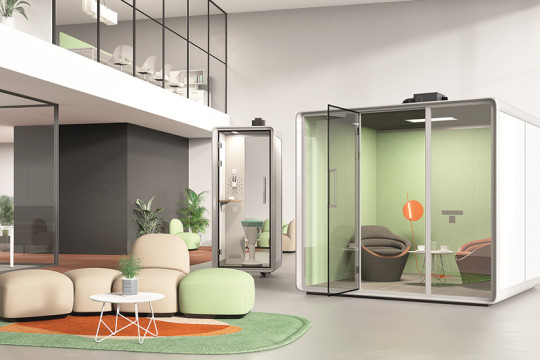The Office is Phygital Where Design Meets Digital
Workspace has a new meaning due to COVID-19. The distinction between in-person presence and remote presence is hazier than ever. The ability to interact across physical and virtual teams must be smooth under the new normal of work. How can businesses get ready for changes in office layout that will improve the working environment for their employees? Can the new hybrid workplace provide an atmosphere that is phygital for all generations?

A Phygital Workplace
The phrase "PHYGITAL workplace" refers to an environment where the physical and digital worlds coexist. It describes an office experience using digital technology at a real place.
The workplace was typically associated with a physical presence in the office but the popularity of combined physical and digital cooperation was rising even before the pandemic. Businesses need to implement design strategies and digital technologies to enable more mixed presence teams because it is currently a daily reality for many employees and is expected to become a major theme in our professional life for years to come. A new need has been added to the organization's agenda as a result of this technological disruption: an empowered employee experience.
The Choice of Spaces, Technology, and Furniture
A productive atmosphere depends on designing adaptable spaces that take privacy and mobility into account. Giving employees workplace freedom for when they arrive at the office requires the creation of places that promote choice.
● Closed conference rooms with adaptable equipment and technology.
● Room reserving software and hot desking
● Open meeting rooms with moveable furniture that may be customized for users
● Focus areas for quiet time, hybrid meetings, and private phone conversations
● Lounge areas and collaborative places
● Café areas featuring adjustable seating for eating, working together, and alone time

Phygital for 3 Work Styles
Three basic work styles—diverse, focused, and collaborators—can be widely distinguished. However, depending on the industry, culture, and departments, these styles might vary from company to company. There may be only two distinct identities in certain businesses, while there may be up to five. The degree of individual and team difference, the hybrid work style used, the nature of the business, and several other factors all have a role.
● A person who is focused spends the most of their time on particular projects, works diligently at home, and spends some time meeting with individuals after arriving at the office. The option to reserve desks and conference rooms remotely will be crucial for those whose work styles suit this description.
● For collaborators, these ratios are the opposite; meetings take up the majority of their daily schedule and take up less time overall than focused work. They require a variety of meeting locations, including formal and casual, small and big, and ones that can accommodate face-to-face and hybrid meetings.
● None of the daily activities of diverse individuals predominates in any appreciable way. In addition to meetings and individual tasks, the typical workday also includes things like phone calls and paperwork. They require a setting that can accommodate their numerous activities, including a variety of meeting rooms, less formal areas, open areas, and focus rooms.

The Future is Phygital
Organizations may succeed in the new phygital age by offering a digital infrastructure and the greatest user experience to personnel and clients. By implementing a hybrid office design that accommodates each employee's particular demands and fosters community by accepting generational, digital, and physical variances. We can use more of innovative technologies and design environments for hybrid working to give mixed presence teams the highest-quality interaction possible. Beyond that, new work hacks and widgets created to promote the convergence of the remote and office will define the phygital workplace.


